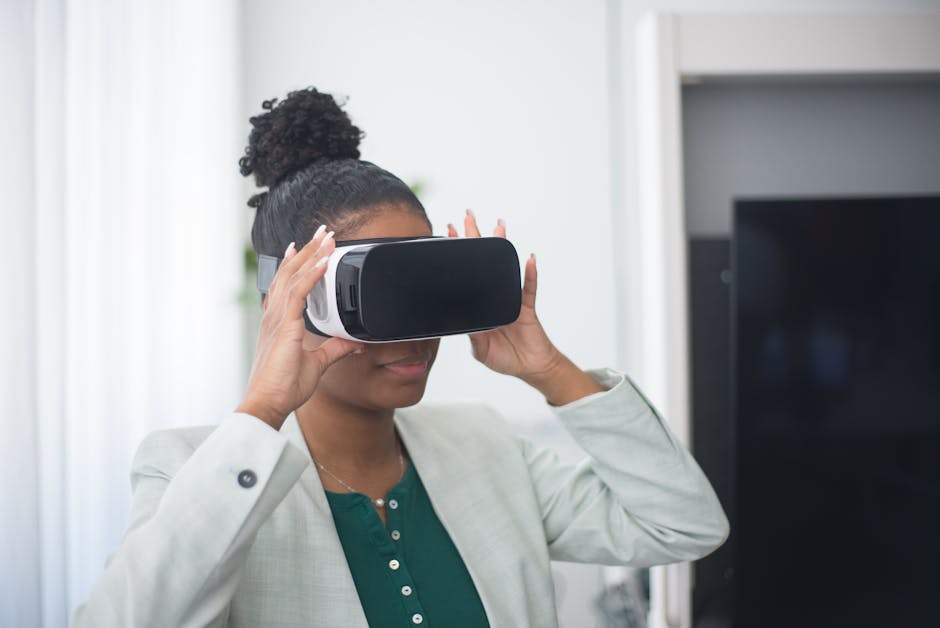Smart Office Ideas: Transforming Workspaces for the Future
“Explore cutting-edge smart office ideas that are reshaping the way we work. From automated lighting to interactive floorplans, this article delves into the features and benefits of intelligent workspaces, offering insights for businesses looking to embrace the future of office design. ”

The Rise of Smart Office Spaces: Redefining the Modern Workplace
In today's rapidly evolving business landscape, the concept of a "smart office" has moved beyond mere buzzword status to become a tangible reality for forward-thinking organizations. But what exactly constitutes a smart office, and why should businesses invest in creating one? Let's explore the world of intelligent workspaces and uncover the transformative potential they hold for companies of all sizes.

What Makes an Office Space "Smart"?
A smart office is more than just a collection of high-tech gadgets; it's an ecosystem where technology seamlessly integrates into the work environment to enhance productivity, collaboration, and employee well-being. At its core, a smart office leverages cutting-edge solutions to streamline workflows, facilitate communication, and create a more efficient and comfortable workspace for all.
Some key features that define a smart office include:
-
Automated Lighting Systems: Smart lighting adjusts based on occupancy and natural light levels, optimizing energy usage and employee comfort.
-
Intelligent Climate Control: Smartphone-controlled temperature systems allow for personalized comfort settings and improved energy efficiency.
-
Interactive Floorplans: Digital layouts provide real-time information on available workspaces, meeting rooms, and quiet zones, enhancing space utilization.
-
Advanced Security Measures: From biometric access controls to smart surveillance systems, security is seamlessly integrated into the office infrastructure.
-
IoT-Enabled Devices: Connected devices gather data on office usage patterns, enabling better decision-making for facility management.
The Benefits of Embracing Smart Office Technology
Implementing smart office solutions offers a multitude of advantages for businesses and their employees:
Enhanced Productivity
By automating routine tasks and providing tools that streamline workflows, smart offices allow employees to focus on high-value work. For instance, meeting room booking systems eliminate the hassle of scheduling conflicts, while smart desks can remind users to stand periodically, promoting better health and focus.
Improved Collaboration
Smart office technologies break down barriers to communication, fostering a more collaborative work environment. Video conferencing equipment, interactive whiteboards, and cloud-based project management tools make it easier for teams to work together, regardless of their physical location.
Data-Driven Decision Making
One of the most significant advantages of a smart office is the wealth of data it generates. From occupancy rates to energy consumption patterns, this information empowers facility managers and business leaders to make informed decisions about space utilization, resource allocation, and operational efficiency.

Enhanced Employee Experience
A well-designed smart office can significantly improve employee satisfaction and well-being. Features like personalized lighting and temperature controls, ergonomic workstations, and apps that simplify daily tasks all contribute to a more comfortable and enjoyable work environment.
Implementing Smart Office Solutions: Best Practices
While the benefits of smart offices are clear, implementing these technologies requires careful planning and execution. Here are some best practices to consider:
-
Start with a Clear Strategy: Define your goals for creating a smart office. Are you primarily focused on energy efficiency, improving collaboration, or enhancing security? Your objectives will guide your technology choices.
-
Prioritize User Experience: The most advanced technology is useless if employees find it difficult to use. Choose intuitive solutions and provide comprehensive training to ensure adoption.
-
Ensure Compatibility: Select technologies that can integrate with your existing systems and with each other. This interoperability is crucial for creating a truly smart office ecosystem.
-
Address Privacy Concerns: With the increased data collection in smart offices, it's essential to be transparent about how information is used and to implement robust data protection measures.
-
Plan for Scalability: Choose solutions that can grow with your business. This might mean opting for cloud-based systems or modular hardware that can be easily expanded.
The Future of Smart Offices
As technology continues to evolve, so too will the possibilities for smart office design. Emerging trends to watch include:
-
Artificial Intelligence: AI-powered assistants could handle scheduling, answer queries, and even predict maintenance needs before issues arise.
-
Augmented Reality: AR could revolutionize everything from wayfinding in large office complexes to remote collaboration on complex projects.
-
Biophilic Design: Integrating nature into smart office designs through living walls, natural lighting, and air purification systems to boost well-being and productivity.

Conclusion: Embracing the Smart Office Revolution
The smart office is not just a vision of the future; it's a present reality that's reshaping how we work, collaborate, and interact with our work environments. By embracing these technologies, businesses can create more efficient, productive, and employee-friendly workspaces that are ready to meet the challenges of the modern business world.
As we move forward, the most successful organizations will be those that view their office spaces not just as places to work, but as strategic assets that can drive innovation, attract top talent, and give them a competitive edge in an increasingly digital world.
Are you ready to transform your workspace into a smart office? The future of work is here, and it's smarter than ever before.